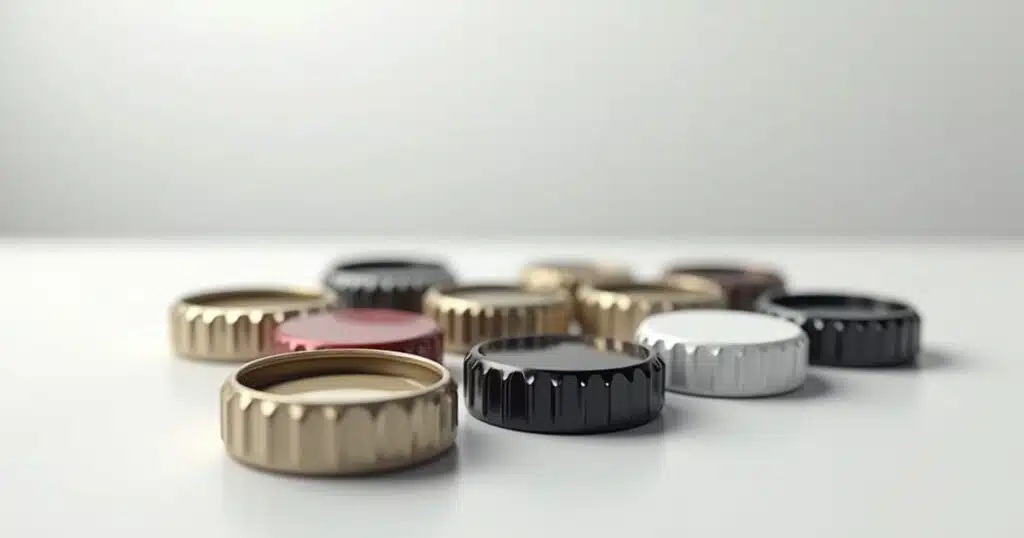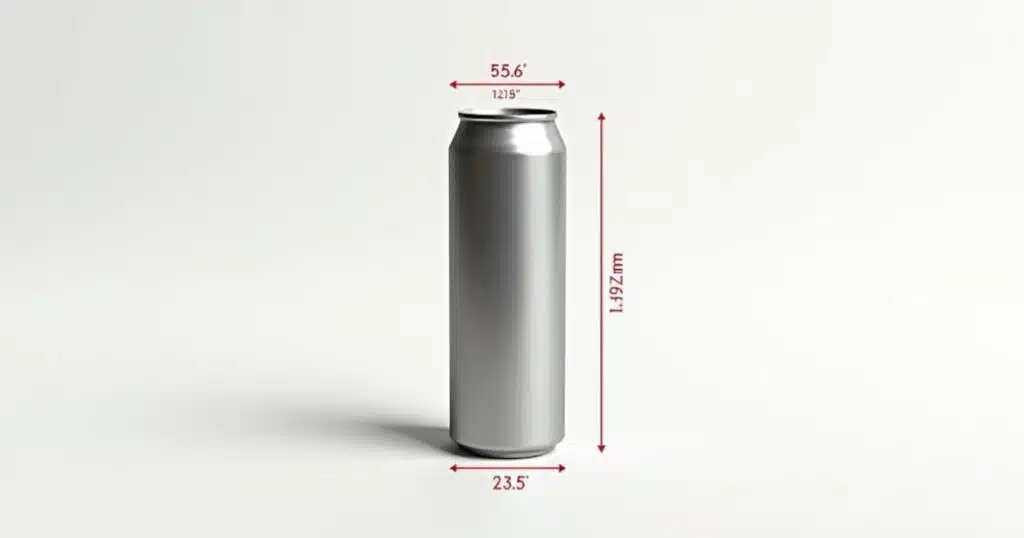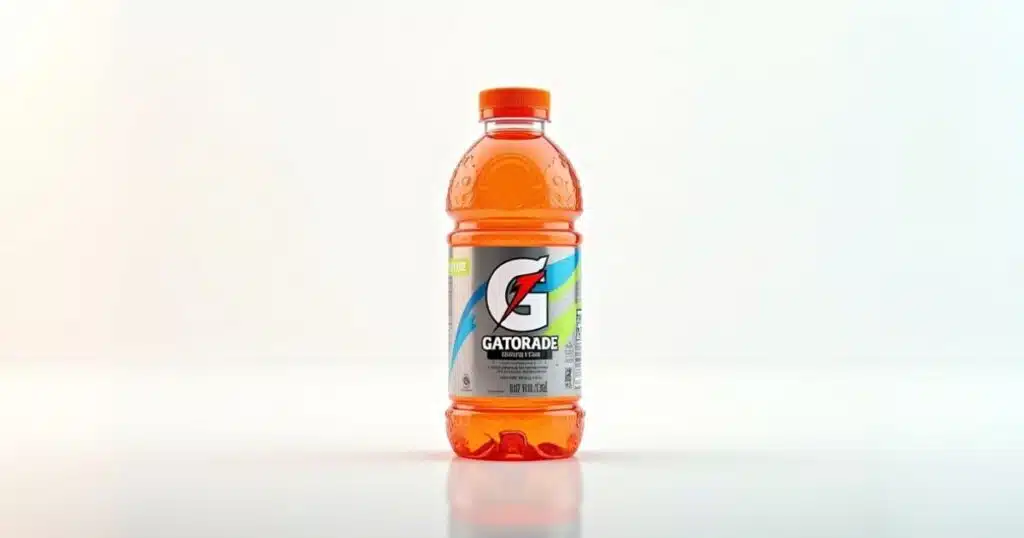Ever grabbed a soda, twisted off the cap, and tossed it aside without a second thought? Those small circular discs we discard by the billions actually represent remarkable feats of engineering precision.
Bottle caps might seem insignificant, but their dimensions are carefully calculated down to fractions of millimeters to ensure perfect seals, compatibility across brands, and global standardization.
From craft breweries to multinational beverage corporations, the humble bottle cap’s measurements maintain a silent consistency that we rarely notice until something goes wrong. Let’s pop the top on this overlooked everyday object and explore the fascinating world of bottle cap dimensions.
How Big Are Standard Bottle Caps?
The most common bottle cap the classic crown cap found on beer and glass soda bottles typically measures 26.7 millimeters (just over 1 inch) in diameter. But that’s just the beginning. Plastic screw caps for water and soda bottles generally range from 28mm to 38mm across, while wider-mouth containers like sports drinks might use 42-48mm caps.
These seemingly arbitrary numbers actually represent decades of refinement in the beverage industry, balancing factors like ease of opening, manufacturing costs, and the critical need for a reliable seal.
The Crown Cap: Engineering Marvel in Miniature
The crown bottle cap remains one of packaging’s greatest inventions. Patented in 1892 by William Painter, this corrugated-edge marvel revolutionized the beverage industry overnight. The standard crown cap’s dimensions have barely changed in over a century a testament to its perfect design.
Crown caps measure approximately 26.7mm in outer diameter with 21 crimps or “teeth” around the edge. The inner diameter typically reaches about 21.5mm, designed to fit snugly over the 26.5mm lip of a standard glass bottle. This slight size differential creates the pressure needed for the perfect seal.
The cap’s height measures roughly 6mm, with the top disc portion about 1mm thick. Inside, you’ll find a plastic liner measuring around 0.8mm thick that creates the actual seal against the bottle. This liner has evolved from cork to plastic composites that don’t affect beverage taste.
Interestingly, crown caps weigh just 2.2 grams each, yet can withstand over 80 pounds of pressure from carbonated beverages. This strength-to-weight ratio makes them one of the most efficient packaging solutions ever created.
Plastic Screw Caps: A Size for Every Container
Unlike their crown counterparts, plastic screw caps come in numerous standardized sizes, each serving specific beverage types:
The 28mm cap dominates the water bottle market, recognized by its shallow thread pattern and relatively small diameter. These caps typically stand 15-20mm tall and incorporate tamper-evident bands that separate when first opened.
Most carbonated soft drinks use 38mm caps, which provide the larger surface area needed to maintain pressure in 20oz and 2-liter bottles. These caps feature deeper, more aggressive threading patterns with approximately 2.5 complete rotations needed for removal.
Sports drinks and juice containers often employ 42-48mm wide-mouth caps, allowing faster pouring and drinking. These larger caps generally use a single-lead thread design requiring just one full rotation to open.
The thread specifications themselves follow the PCO (Plastic Carbonated Ounce) standard, ensuring caps produced anywhere in the world will fit their corresponding bottles perfectly.
Metal Twist-Off Caps: The Hybrid Solution
Twist-off metal caps common on beer bottles and some premium sodas blend crown cap dimensions with screw-cap functionality. These typically measure 26-27mm in diameter but incorporate a thread pattern inside rather than requiring crimping.
The thread pattern usually contains 5-6 start points rather than a continuous thread, allowing the cap to be removed with just a quarter turn. These caps stand slightly taller than crown versions at approximately 7.5mm height to accommodate the internal threading.
Manufacturing tolerances for twist-off caps are incredibly precise generally within ±0.13mm to ensure they maintain pressure while remaining easy to open by hand. They typically weigh 2.5-2.7 grams, slightly more than traditional crown caps.
See Also: Water Bottle Sizes: Everything You Need to Know
Wine and Spirits: Specialized Closure Systems
Wine bottle caps and corks represent a different dimension category altogether. Standard wine screw caps (Stelvin closures) measure 30mm in diameter and approximately 60mm in height, including the skirt that wraps around the bottle neck.
The wide variation in spirits bottles has led to standardization around a few key sizes: the most common being 22mm, 24mm, and 28mm caps. Higher-end spirits often utilize 28mm caps with custom heights ranging from 15mm to 22mm depending on brand aesthetics.
Natural corks, while not technically caps, maintain standard dimensions of approximately 24mm diameter with lengths varying from 38mm to 54mm depending on the intended aging period of the wine.
Measuring and Identifying Cap Sizes
Need to identify a cap size without specialized tools? Here are some practical methods:
A US quarter measures 24.26mm in diameter, making it slightly smaller than a standard crown cap. Place the cap on top of a quarter if it extends about 1mm beyond the coin’s edge all around, it’s likely a standard 26.7mm crown.
For plastic caps, a standard credit card width (about 54mm) can serve as a reference. A typical water bottle cap (28mm) is slightly more than half the width of a credit card.
Digital calipers provide the most accurate measurements, but a good ruler with millimeter markings works too. Remember to measure across the widest point, excluding any tamper-evident bands.

The Industrial Standards Behind Bottle Cap Dimensions
The seemingly simple dimensions of bottle caps represent sophisticated industrial standardization. The Technical Committee on Packaging of the International Organization for Standardization (ISO) maintains specific standards for closures:
ISO 12011 covers the dimensions and tolerances for crown caps, specifying the crucial 26.7mm ±0.3mm diameter.
For plastic caps, the International Society of Beverage Technologists (ISBT) maintains the PCO standards, with PCO-1810 and PCO-1881 being the most widely adopted. These specifications regulate not just diameter but thread pitch, height, and seal contact points.
These standards ensure that caps manufactured in Tokyo will fit bottles made in Toronto critical for global beverage companies operating across continents.
Environmental Impact of Cap Dimensions
The environmental footprint of bottle caps directly relates to their dimensions. Even small reductions in size can create massive material savings across billions of units.
In 2008, Coca-Cola introduced its PCO-1881 cap standard, reducing the height of plastic caps by just 3mm and decreasing their weight from 3.8g to 2.7g. This seemingly minor change saved approximately 40,000 metric tons of plastic annually worldwide.
The shorter thread design also reduced the bottle neck height, saving an additional 19,000 metric tons of PET material. These dimension changes had no impact on consumer usability but dramatically reduced environmental impact.
The EU’s Single-Use Plastics Directive now requires that caps remain attached to bottles a design change that has altered cap dimensions to incorporate tethers and hinges while maintaining the same basic diameter standards.
Custom and Specialty Cap Dimensions
Beyond standard sizes, specialty beverages often utilize custom cap dimensions:
Kombucha bottles frequently employ 38mm lug caps that use partial threads requiring only a quarter turn to open.
Craft beer has embraced larger 29mm crown caps for special releases, providing more space for decorative printing.
Cold brew coffee and premium juices often use 63mm caps on wide-mouth jars, prioritizing easy access over portability.
The fast-growing energy shot market standardized around tiny 20mm caps for their concentrated products, emphasizing their “shot-sized” nature.
See Also: Milk Carton Sizes: Everything You Need to Know
Why Bottle Cap Dimensions Matter
The precise measurements of bottle caps impact far more than just manufacturing. They influence:
User Experience: Cap dimensions affect grip ergonomics and the force required to open containers. Engineers test various sizes to find the optimal balance between security and ease of opening.
Product Integrity: Even a 0.2mm deviation in cap dimensions can create seal failures, leading to contamination or carbonation loss.
Manufacturing Efficiency: Bottling lines run at speeds up to 2,000 bottles per minute. Standardized cap dimensions ensure these machines operate without jams or stoppages.
Brand Recognition: Some brands have leveraged unique cap dimensions as marketing tools. Coca-Cola’s contour bottle cap and Gatorade’s distinctive wide-mouth design have become recognizable brand elements.
Practical Applications of Cap Dimension Knowledge
Understanding bottle cap dimensions has practical applications beyond the beverage industry:
DIY Projects: Crafters collect specific cap sizes for jewelry, table surfaces, and art projects.
Home Brewing: Selecting the right bottle cap size ensures proper sealing for homebrewed beverages.
Storage Solutions: Reusing bottles requires matching replacement caps of the correct dimensions.
Accessibility Design: Product designers consider cap dimensions when creating tools for those with limited hand strength or mobility.
The Future of Bottle Cap Dimensions
As sustainability concerns grow, bottle cap dimensions continue to evolve:
New “lightweight” crown caps reduce metal usage by 15% while maintaining the same outer dimensions and seal integrity.
Biodegradable caps maintain standard dimensions for compatibility with existing bottles but incorporate materials that break down more readily.
Smart caps with embedded NFC chips maintain traditional external dimensions while hiding technology inside that can verify authenticity or track freshness.
Conclusion
The humble bottle cap, with its precise dimensions honed over more than a century, represents an overlooked marvel of standardization and engineering. From the 26.7mm crown cap to the wide variety of plastic closures, these small discs enable the global beverage industry to function seamlessly.
Next time you twist off a cap or pop the top of your favorite drink, take a moment to appreciate the invisible precision that went into its dimensions. Look around your kitchen how many different cap sizes can you identify? This newfound awareness transforms ordinary packaging into a testament to industrial design’s quiet perfection.
Understanding these dimensions not only satisfies curiosity but can help with practical applications from crafting to home brewing. The bottle cap small in size but massive in impact deserves recognition as one of packaging’s greatest achievements.
Read more knowledgeable blogs on Measure Take.



